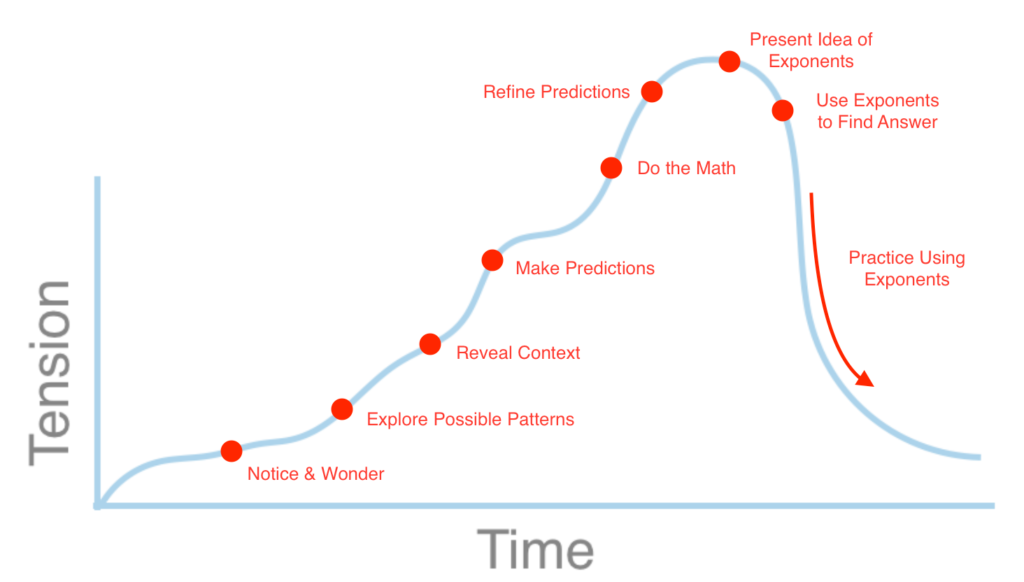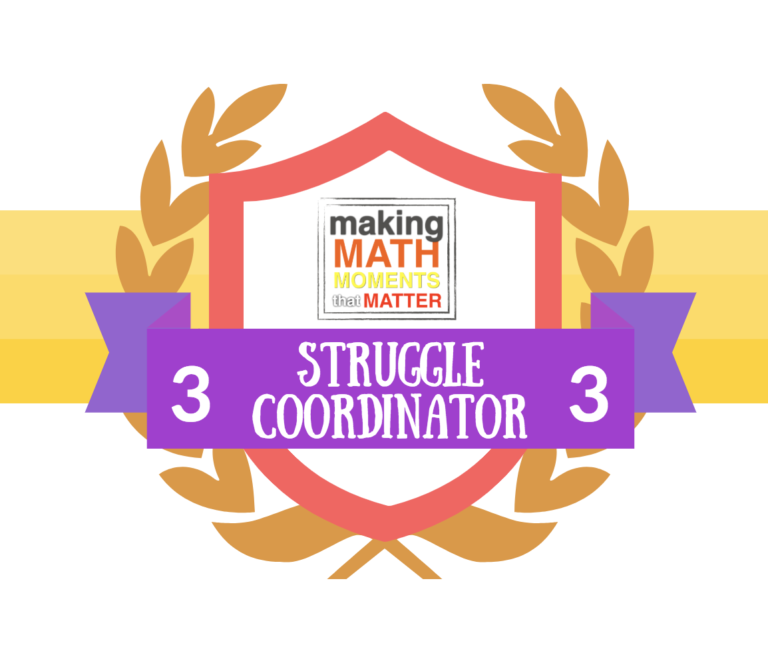You may have heard talk of this idea of “productive struggle.” You may even have wondered what it is and how it’s different from any other kind of struggle. We know from research that the brain grows through challenges, or struggles, just like other parts of the body. Let’s take muscle growth, for example. You can’t build muscle by lifting weights that feel light to you, right? On the flip side, though, starting your strength training journey by trying to bench press an elephant won’t help at all. To be successful at gaining strength you must gradually increase the challenges over time.
Learning math works the same way. Gradually increasing the challenges over time builds stamina and understanding. Allowing students to have just enough information to keep them interested and thinking gives them the opportunity to struggle in a way that is productive to their learning. Hence, productive struggle.
While I have thoroughly enjoyed this workshop and the creative ideas it has stirred up in my head, borrowing this idea of The Hero’s Journey from good story writing and applying it to math lessons is sheer genius and is my favorite so far. It makes perfect sense that we can’t expect students to get excited about math if we aren’t creating some sense of wonder and amazement through the structure of our lessons. That is, we should be carefully coordinating the struggle to maximize engagement and learning.
So, what is The Hero’s Journey, you ask? Well, in short, it’s the way good story writers and good movie makers build the tension in a tale through events and encounters in the hero’s life. Like in Disney’s The Lion King, for example, where young Simba learns what he needs to know in order to be a good king bit by bit through the escalating conflicts and trouble he gets into. All that builds to the main event where he finds out what his uncle did and he wins the challenge to take back the Pride Lands and be king.
Basically, The Hero’s Journey is the “predictable” plot sequence we find in nearly every good story. It would look like this if we placed it on a graph.

Jon Orr & Kyle Pearce
In traditional mathematics instruction we tend to reverse this journey. We give all the “good” information right up front because we think students need to know it all before they can be successful solving problems. We give them formulas and algorithms and then expect them to use the information without really understanding why or how it works. We take the “productive” out of the struggle and leave them to wonder why they are doing what they are doing. Often, then end up struggling on the back end.
Embedding the Curiosity Pathway (from week 2) onto The Hero’s Journey when planning a lesson helps to keep students engaged until the main event, where they either make a mathematically discovery on their own or we give them just the nudge they need to understand how their thinking connects to the math at hand. Using them together allows teachers to carefully orchestrate the struggle by increasing the challenges little by little.
Let’s take my powers of 10 example from last week. Placing that on the tension and time graph might result in something like this:

Of course, I taught this lesson before I knew what The Hero’s Journey was, but I can see how my Curiosity Pathway embeds onto the graph and creates that tension that allows for productive struggle.
My challenge now is to be intentional about planning those steps along the path to keep student thinking moving forward and to allow students to construct their own learning throughout the journey.
My job is to create opportunities for productive struggle so they can grow as learners of mathematics. My job is to be a Struggle Coordinator.
I’d love to hear your thoughts on The Hero’s Journey and how it applies to teaching and learning. What are some ways you can build the suspense so that your students can experience productive struggle?




I’m loving your reflections both here on your blog, but also through the email thread with your Making Math Moments That Matter Community Partners!
So happy the Hero’s Journey has resonated with you and you’re already putting it into action. Bravo!